On the Road is a weekday feature spotlighting reader photo submissions.
From the exotic to the familiar, whether you’re traveling or in your own backyard, we would love to see the world through your eyes.
Good morning everyone,
Have a good weekend, we’ll see you Monday.
Actually being On The Road suddenly has become a thing of the past, and hopefully the future. In this plague year, in a country ruled by incompetents, it may be a while before travel is prudent, especially for those of us (like me) who are 60+ years old.
But it is spring in the heartland, and the birds are returning, or leaving, or passing through. Birdwatching and bird photography, especially here in flyover country, are actually excellent social distancing tactics. So I plan to continue to seek our birds and images here in north-central KS, and share them with Alain to use as he sees fit. For most of you, I’m sure, this part of the USA is almost like visiting a foreign country!
We were supposed to go to the AWP conference in San Antonio TX in early March. AWP stands for Association of Writers and Writing Programs (I know, you’d think a bunch of writers would actually generate an accurate acronym…), and a book that Elizabeth co-edited was going to be launched at a big party sponsored by her press (Trinity University Press). San Antonio had a coronavirus case early (a true study in incompetence, see https://www.washingtonpost.com/national/coronavirus-grand-princess-evacuees-texas/2020/03/09/9bf9e360-6142-11ea-b3fc-7841686c5c57_story.html), the conference was not cancelled outright, but sponsors pulled out, attendees stayed away, and the press cancelled the party because really, who wants to put on a party that nobody will go to. So we were halfway there, somewhere On The Road in Oklahoma, when it became obvious that it was really not a good idea to continue. We turned around. But the book is still ready to go, available on Earth Day 2020, and might appeal to a lot of jackals. Here’s some more information – https://www.terrain.org/2020/news/dear-america-anthology/
All royalties will be donated to organizations who are doing good work in this time of Trumpism (Union of Concerned Scientists, Natural Resources Defense Council, and the ACLU.
Needless to say, that was tremendously disappointing. But this conference was apparently the first harbinger of the waves of cancellations and life changes that we are now facing. Life goes on, and it is, as I mentioned above, Spring in the Northern Hemisphere!
So here are some images from the last week or so. More to come as spring progresses, and as we navigate through the disaster that the election of 2016 has bequeathed us.
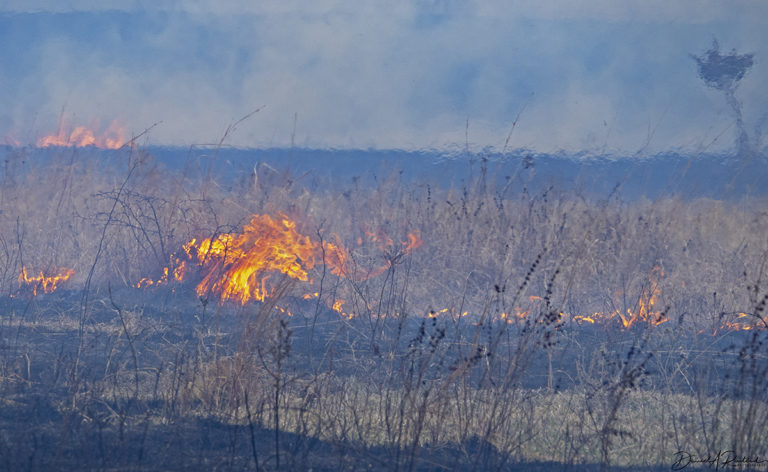
Springtime in the Flint Hills of Kansas is a time of destruction, and then renewal. The tallgrass prairies of this region evolved with frequent fires, and depend on frequent fires to maintain a grassland ecosystem. Fire suppression leads to shrubby invasion, and then cedar tree invasion, and then no more prairies. So our ranchers here burn the prairies in the spring, and in a few weeks this darkened landscape will be brilliant green and productive.
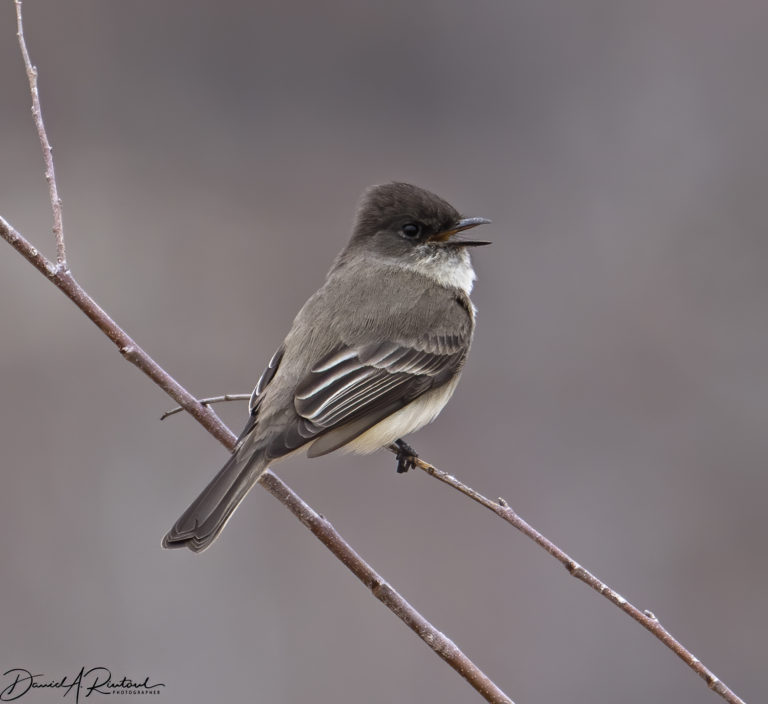
One of the earliest passerine birds to return to Kansas is the ebullient Eastern Phoebe. There will be a phoebe nest in every state park potty, and in every bridge or culvert, very soon
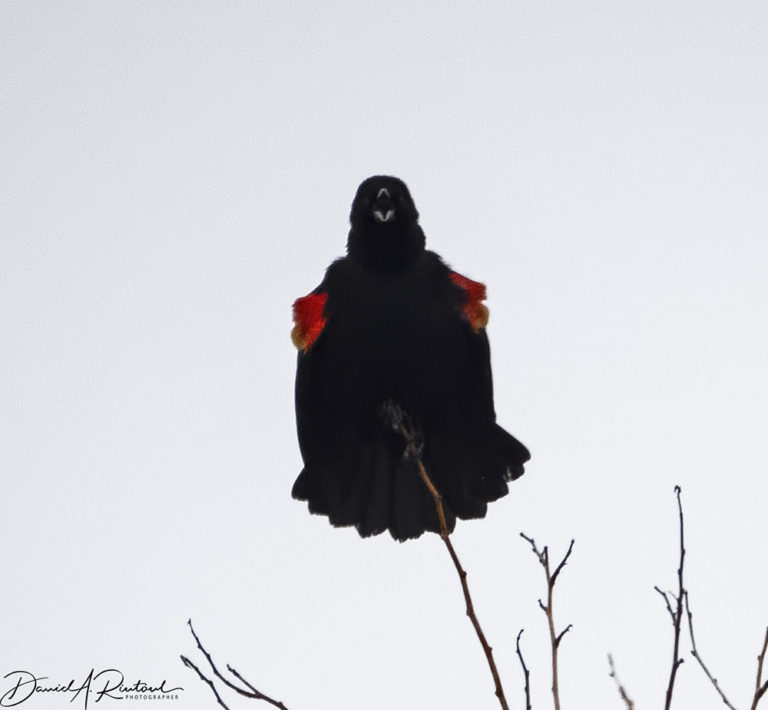
Springtime in much of North America is accompanied by the songs of Red-winged Blackbirds. That song epitomizes spring for many birders, and this one serenaded me for many minutes in a local wetland.
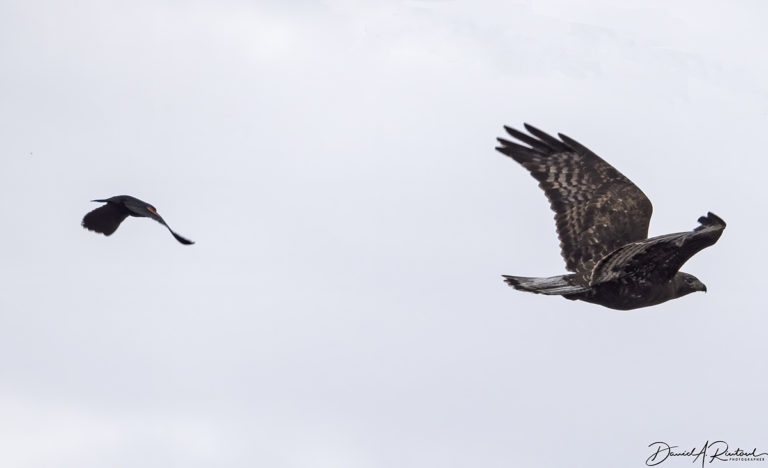
Some of our winter residents are not thrilled with the return of the Red-winged Blackbirds. This dark-morph Harlan’s Hawk, who will soon be headed to the Yukon or Alaska for the summer, does not look thrilled with the attention he is getting from a testosterone-fueled Red-winged Blackbird.
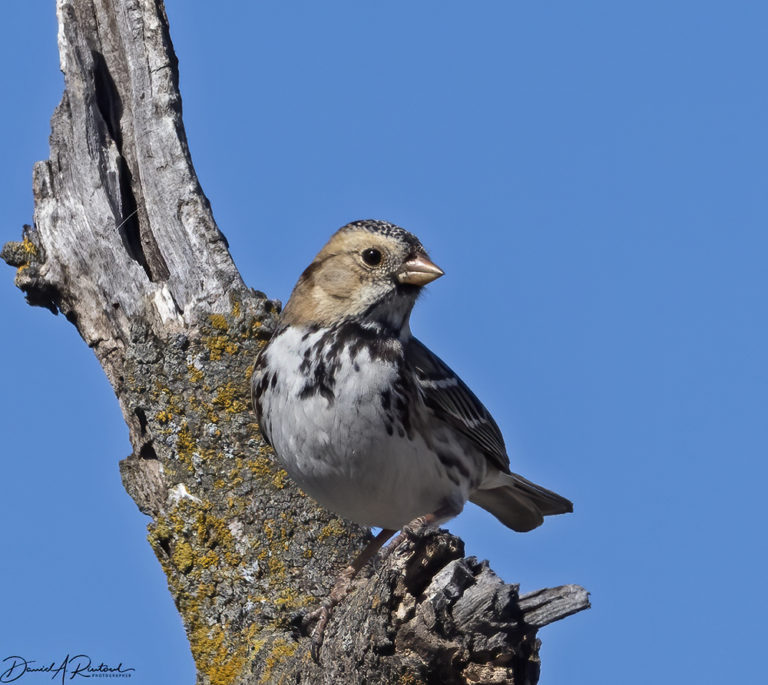
Another bird that will soon be leaving us for points north is the Harris’s Sparrow. A bird with a unique winter and summer range (see this amazing migration map animation at eBird for the details – https://ebird.org/science/status-and-trends/harspa/abundance-map-weekly). This is strictly a flyover country bird, although some vagrants do show up every year on the east and west coasts.
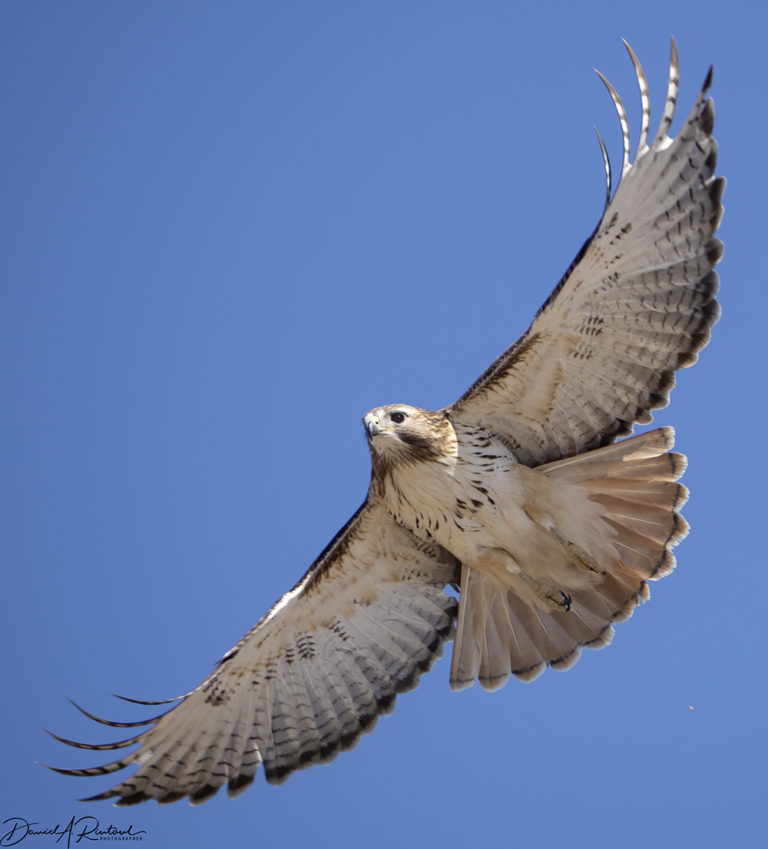
Some of our local Red-tailed Hawks are year-round residents, like this lovely representative of the eastern (borealis) subspecies. Hawks like this one are common here in the summer and east of here all the way to the east coast.
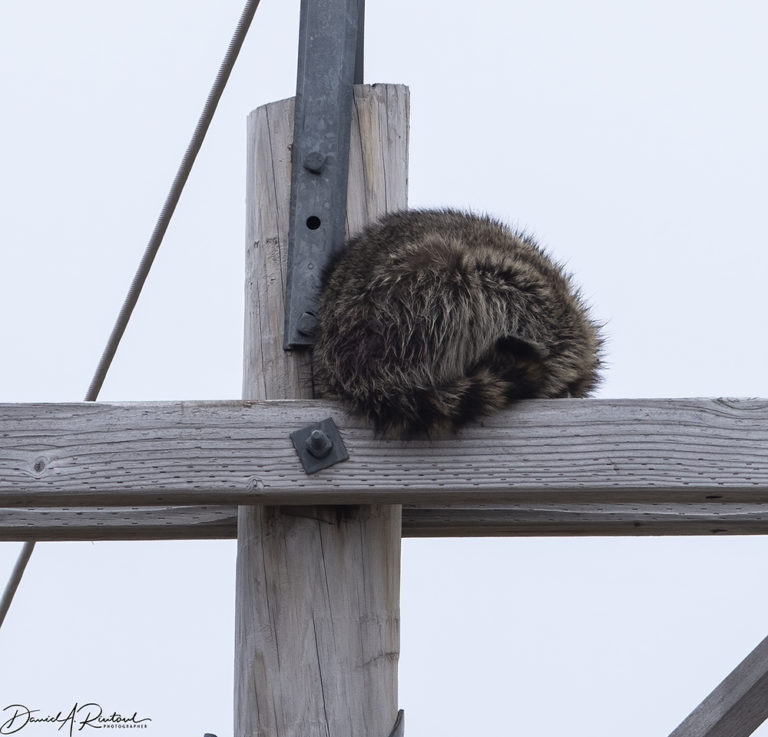
I’ve never seen this before, so I had to take a picture. It’s a raccoon, sleeping apparently comfortably on the crossbar of a utility pole 25 or so feet above the ground. It was there all day; I checked on it twice and it had shifted positions, but never descended. Perhaps it was also practicing social distancing…

?BillinGlendaleCA
Great photos as always, that last bird does look a bit different.
mrmoshpotato
@?BillinGlendaleCA: It’s the rarely-photographed, Trash Pandabird. Truly a magnificent shot.
mrmoshpotato
Very nice, but why’d you have to torch the prairie for a shot? :)
raven
@mrmoshpotato: Controlled burn?
OzarkHillbilly
I think the coon is afraid of heights. Got to the top without ever looking down and now is scared stiff to move. :-0
Plenty of nesting activity here in the hills and hollers. The Eastern Pheobes (we call them Fly Catchers) are hard at it, trying to build a nest in the exact same location they abandoned one in last year, one with babies, because there was too much human activity for them to tolerate. So I am trying to discourage them. Meanwhile, I have Carolina Wrens building a nest where the fly catchers used to prefer to (in my car port), as well as another pair trying to build a nest inside my shop. Guys, please, I have 12.5 acres of woods you can build nests in, including several bird houses. STOP BUILDING NESTS IN PLACES I HAVE TO FREQUENT!!!
Speaking of just returned Red-winged Blackbirds, coming home from the vets Wednesday, I spotted a Coopers Hawk carrying one in it’s talons, I suspect back to it’s nest for it’s own just hatched babies. I was a little surprised I was able to identify the hawks meal but the vibrant red shoulders were so vivid it could have been nothing else.
On a personal note of disappointment, we are almost out of sunflower seeds and I do not anticipate getting anymore in this time of Covid.. In all likelihood this means we will not be visited by the Rose Breasted Grosbeaks as they pass thru this year.
I has a sad.
Mike S (Now with a Democratic Congressperson!)
Wonderful pictures as always. Thanks!
Albatrossity
@raven: Yes. ‘Tis the season for controlled burns.There is a short and impressive video of a controlled burn at Konza Prairie on the Division of Biology Facebook site; you can see how controlled it actually is!
https://www.facebook.com/permalink.php?story_fbid=10156812202782213&id=158430177212&__xts__%5B0%5D=68.ARABRIMGdz45ORL2RWYlZBgoAnLOMy21_ytJc6ChOF8PZAl9QA3vic8AfAUd728khQWxdkVegVEuIoneKVB2yw7s8oOuupei2ho6OFMp9IZLARbLXKBZdmmW3vPEIwf6YzEoFp4-YRTx1OT_PswNZdh-EKl7IGLPbdiAsWF9TthwZZZ830pdwrfDAM0gwbtVQceobfsUDLC_imt_Qp-Vy43VToqDUpqMNQjgAcAdJqE_nSgqy70r8gM8z1MN-sR_p8ZALyP3Olm0Mvjq-wKmabb1g1S772611rGssnxmmdHYa4UAY38eDZAUx59uEm8072sUiiPZkPtFNRkciI6Chad9iIFpTw&__tn__=-R
eclare
Always look forward to your photos!
Mathguy
One of the things I dread every spring are the Kansas fires. Why? Because all the pollution has to go someplace, and it often goes north to Nebraska. Only time of the year our air quality goes from Good to USG or Unhealthy. I always hope for north winds so it ends up in Oklahoma. That said, love the photos.
arrieve
So wonderful, Albatrossity — thank you! That picture of the red-winged blackbird takes my breath away but my favorite is the phoebe. I’m staying out of Central Park like a good citizen, but I’m sure the phoebes have arrived there in large numbers, and I miss seeing them.
MelissaM
@OzarkHillbilly: Once, we had a rose-breasted grosbeak come through our yard. He was there for 2 days at the safflower feeder before leaving. What a blessing of nature!
MelissaM
That hawk photo!
You say the blackbird was serenading you, I say it was telling you to GTFO.
Albatrossity
@Mathguy: Yep, that smoke is pretty awful here, closer to the source. That said, it is also true that air quality in lots of places is close to the edge of unhealthy, according to EPA standards, and the smoke just pushes it over the edge. Sorta like the visible part of an iceberg sitting atop a large submerged portion.
One of the things that needs to happen is to convince ranchers not to burn annually; burning every 3-5 years would be just as good for the ecosystem, cattle production, and better for the air quality. Many of them burn annually because that is how they have always done it, and there is a single paper in the scientific literature that says it maximizes grass growth and thus cow weight gain. That may or may not be true, but it is absolutely true that less frequent burning is better for plant diversity, animal diversity, and air quality. Patch burning is catching on in some places, and that would also lessen the acreage burnt every year.
Another step forward would be to convince them that they do not have to all burn their pastures in the same week or two. Earlier burning (January or February) is even better for the ecosystem. Later burning (September) is good too, but it’s too warm at that time of the year to make it comfy to be around a prairie fire.
Hopefully some or all of these things can be implemented, voluntarily or perhaps with legal teeth and enforcement. Ranchers hate that, as you know…
Miss Bianca
beautiful photos, as always.
Just completed an article for my local paper on the new burn permit procedures and new burn ordinance that got passed in our county last month (feels like a year ago, already). So now I feel much more informed about the differences between various types of burns. Fire District administrator felt compelled to point out for those in the back of the room that just because a burn happens on agricultural land doesn’t make it an agricultural burn (which doesn’t need a permit, as opposed to an ‘open burn’, which does)!
TomatoQueen
Oooh lovely. My Maryland birding friend posted evidence on fB last night that the phoebes have arrived hereabouts and are busy, so it’s nice to be in the goal zone of the flyway. That raptor wing spread shot is stunning.
stinger
Ko-koreee, ko-koreee! (Or, as they’d say if redwings had lips, pot pourri, pot pourri!)
J R in WV
We hear “Teacher, Teacher” from the local cardinals. Phoebes aka flycatchers locally are popular. Most summers they make a stab at putting a nest atop the frame for our front door, and I use a tool to scrape the moss and mud plaster they build with here away. Two or three times. Most traveled spot on the farm, why, O, why do they do that?
Also, tadpoles are now dispersed into the leaves and silt in the tiny frog pond — so invisible, disappeared. Can only hope they do well and become newly transformed wood frogs later on in the summer. Awaiting egg masses from chorus frogs and tree peepers! The sounds are so great, croaking and peeping and splishing right in the room with us when we can leave the front door open. Wild frogs are really hard to sneak up on!!
David, the photos are great.
That pole-coon photo is really funny. He will come down, eventually, I hope with no injuries! One of our cats climbed way up a tiny sapling right outside the living room windows, stopped at the first little staub of broken off limb. Was not comfortable like the pole-coon looks. Eventually figured out how to shinny down the sapling backwards, which does not come naturally to most cats. Moved on to climbing a tree and jumping over to the roof, where we could hear her scurrying around up there. Then jumped over to the big oak tree and shinnied down backwards, pretty smart kitty. Has quit doing that as she ages into old less-adventurous cat…